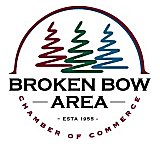The Early History of Broken Bow

Located at the foothills of the Kiamichi Mountains, the town of Broken Bow and its surrounding communities enjoy abundant natural resources, which have contributed to the development of the area. The clean, clear streams and rivers of the area along with the luscious green forests certainly welcomed the Choctaw Indians who were weary from their journey along the “Trail of Tears”. These Choctaws settled in the area and gave Broken Bow its first name, Con-Chito. Con-Chito was an Indian Village located in what is now the downtown business section of Broken Bow. The beauty of the area as well as the abundance of harvestable forests also appealed to the pioneer lumbermen, Herman and Fred Dierks of the Choctaw Lumber Company. These men from Broken Bow, Nebraska, purchased the land and named the community – Broken Bow – after their home in Nebraska.
The town of Broken Bow began as a private development of the Southern Land and Town site Company, a subsidiary of the Choctaw Lumber Company. The original town, consisting of 230 acres, was platted in 1911. A public auction was held in September of 1911 to auction off the prime lots in downtown Broken Bow. The Choctaw Lumber Company then built a large timber processing mill at the south edge of town, and, in the area just to the west, homes were constructed for its employees. The Dierks sawmill was known as one of the largest mills in the United States.
The Dierks family also contributed to the development of Broken Bow by donating land for churches and schools. An entire city block, which had been set aside for a courthouse, was given to the city of Broken Bow for a city park. That city block was later given to the school for a building complex. There are numerous other contributions of the Dierks family to the town of Broken Bow. They built a company hospital and their company doctors provided medical treatment for the entire community. Of course, they provided jobs related to the timber industry. But, they also built the T.O. & E Railroad, they built a dam at Yashau Creek which provided water for the town, and they installed an electric generating plant at their mill site where coal was used to generate the electric power for the mill and for the city of Broken Bow. Also, the Dierks mill in Broken Bow led to the establishment of dozens of smaller mills in the area, which were very important in the development of the town. Among the best known of these mills were those of the Ross family, the Story family, the Huffman family, the Thomason family, the Clouse family and many others.
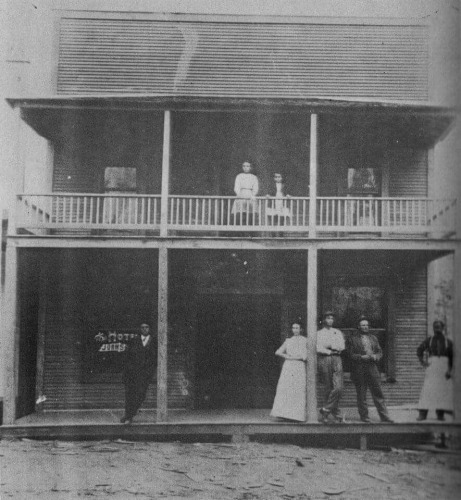 Also, the early history of Broken Bow would not be complete without the mention of many downtown businesses, which developed during those early years. The Johnson Hotel was the first hotel to be built in Broken Bow in 1911. In 1915 this building was torn down and a three-story, brick building was built and re-named the Dell Hotel. The building still stands in downtown Broken Bow and was in operation as a hotel for 74 years. The original Charles Wesley Hotel was first built in 1913 by Mrs. Daisy Wood who named the hotel after her son. The first brick building to be constructed in Broken Bow was the First National Bank building at the northwest corner of Second Street. This building which stills stands is now the Vintage Goods and Tea Room and home to the Lamplight Theater. S.B. and Florence Callaham started the telephone system in Broken Bow. The present-day system, called the Pine Telephone Company is still owned by the Callaham family.
Also, the early history of Broken Bow would not be complete without the mention of many downtown businesses, which developed during those early years. The Johnson Hotel was the first hotel to be built in Broken Bow in 1911. In 1915 this building was torn down and a three-story, brick building was built and re-named the Dell Hotel. The building still stands in downtown Broken Bow and was in operation as a hotel for 74 years. The original Charles Wesley Hotel was first built in 1913 by Mrs. Daisy Wood who named the hotel after her son. The first brick building to be constructed in Broken Bow was the First National Bank building at the northwest corner of Second Street. This building which stills stands is now the Vintage Goods and Tea Room and home to the Lamplight Theater. S.B. and Florence Callaham started the telephone system in Broken Bow. The present-day system, called the Pine Telephone Company is still owned by the Callaham family.
Other buildings of interests include the Broken Bow High School building, which was completed in 1936. This native stone structure was constructed by the National Youth Administration, a division of the Works Project Administration. Recently, the old school building was renovated into the new Broken Bow Public Library. WPA workers also built the City Hall, the City Hall Annex, and Memorial Stadium.
Finally, it is important to note that farming and ranching have also had a great economic influence on the Broken Bow area. The livestock industry has been a prevalent part of Broken Bow even before the city was established, and agriculture was the first way of life in the area when the Choctaws first made the journey to southeast Oklahoma.
From Then to Now

Through the decades, the town of Broken Bow continued to grow and change. Hardware stores, drug stores, dry goods stores, and banks developed into businesses that are still in existence today. Among these are Pine Telephone Company, Bruton’s Dry Goods, Sherrill’s Pharmacy, Chandler-Hewitt Drug, Brown’s Hardware, Tucker’s Appliance, 1st Bank & Trust and many others. New churches were built, schools expanded, and new banks were chartered.
In late 1969, the Dierks family sold their timber holdings to Weyerhaeuser ending an era of one-family control of the timber industry, which had greatly influenced Broken Bow and its people. The Weyerhaeuser Company brought about a change in forestry operations, which has resulted in more employment, greater production, and more intensive management of the forests. Currently, Weyerhaeuser’s paper mill in Valliant and its sawmill in Wright City provide jobs and income not only for its mill workers, but also for the vast number of timber contractors who bring wood products to the mills. The timber industry in Southeastern Oklahoma has definitely become “big business” and people of the area are certainly a vital part of this industry.
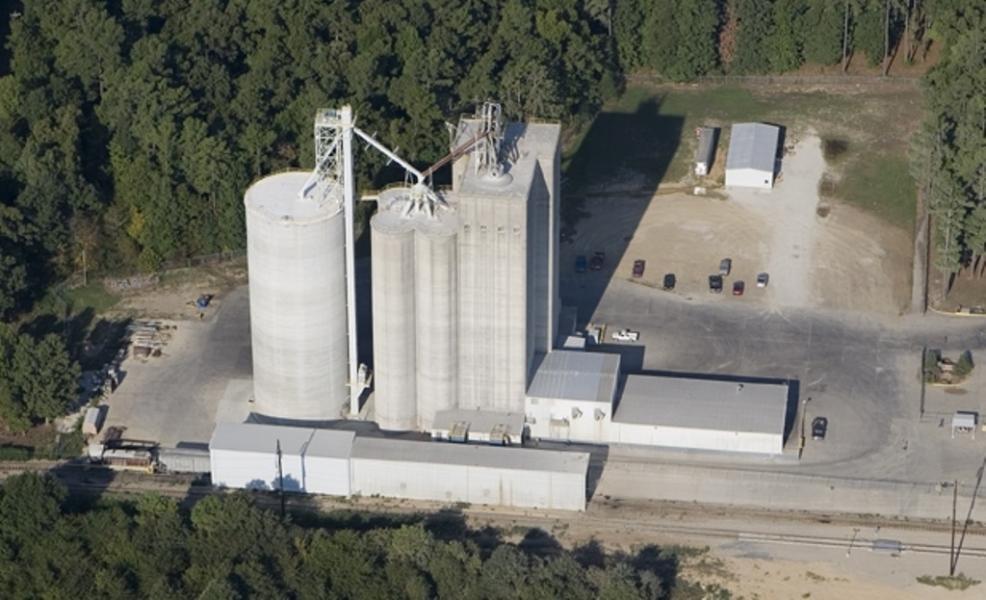 Another economic influence on the Broken Bow Area was the construction of the Lane’s Holly Creek Fryers Processing Plant south of Broken Bow in 1970. The development of the processing plant brought about economic opportunities for local farmers and ranchers who soon became contract poultry growers for the company. The processing plant was eventually sold to Tyson Foods in 1985. Tyson Foods has since greatly improved the Processing Plant as well as the Tyson Hatchery located just West of Broken Bow. Also, Tyson built a Feed Mill east of Broken Bow in the early 1990’s, which also provided needed jobs for the area. Currently, the City of Broken Bow is providing water for the plant through the city’s Gravity Flow Water System.
Another economic influence on the Broken Bow Area was the construction of the Lane’s Holly Creek Fryers Processing Plant south of Broken Bow in 1970. The development of the processing plant brought about economic opportunities for local farmers and ranchers who soon became contract poultry growers for the company. The processing plant was eventually sold to Tyson Foods in 1985. Tyson Foods has since greatly improved the Processing Plant as well as the Tyson Hatchery located just West of Broken Bow. Also, Tyson built a Feed Mill east of Broken Bow in the early 1990’s, which also provided needed jobs for the area. Currently, the City of Broken Bow is providing water for the plant through the city’s Gravity Flow Water System.
Another manufacturing plant to develop in Broken Bow is Pan Pacific Product’s medium density fiberboard plant located on the West edge of town. This company purchased the equipment for Weyerhaeuser’s old Craig Plant and began developing new product lines made from medium density fiberboard.
Our most recent manufacturing plant to open is the Huber Engineered Woods, which is also located on the West edge of town. Huber Engineered Woods is a producer of oriented strand board products used for both construction and industrial markets. It manufactures engineered panels and wood products for the construction market that are used in applications such as floors, walls and roofs. It also serves industrial markets with products for engineered lumber, furniture and packaging applications. Huber Engineered Woods selected Broken Bow because of its sustainable wood supply, great transportation and services infrastructure, market access and a very skilled labor pool.
 The natural resources within the Broken Bow Area continued to influence Broken Bow and its surrounding communities throughout time. In the 1960s the U. S. Army Corps of Engineers built a dam on Mountain Fork River, which led to the development of Broken Bow Lake at Hochatown north of Broken Bow. The beauty of the lake with its clear blue water and its luscious green forests soon became known as a great camping area. Visitors and residents were already aware of the natural wonders of Beavers Bend State Park, and soon discovered that the lake was one of the most beautiful lakes in the surrounding states. Most recently, the beauty of the lake and the Beaver’s Bend State Park have led to increased development of the tourist industry in the area north of Broken Bow. The state has built an 18-hole golf course named Cedar Creek Golf Course at the north end of the Lake and numerous cabins rentals have been built in the Hochatown area. Recently, the state, with the help of local contributions, built the Lakeview Lodge at the Stephen’s Gap area of the lake.
The natural resources within the Broken Bow Area continued to influence Broken Bow and its surrounding communities throughout time. In the 1960s the U. S. Army Corps of Engineers built a dam on Mountain Fork River, which led to the development of Broken Bow Lake at Hochatown north of Broken Bow. The beauty of the lake with its clear blue water and its luscious green forests soon became known as a great camping area. Visitors and residents were already aware of the natural wonders of Beavers Bend State Park, and soon discovered that the lake was one of the most beautiful lakes in the surrounding states. Most recently, the beauty of the lake and the Beaver’s Bend State Park have led to increased development of the tourist industry in the area north of Broken Bow. The state has built an 18-hole golf course named Cedar Creek Golf Course at the north end of the Lake and numerous cabins rentals have been built in the Hochatown area. Recently, the state, with the help of local contributions, built the Lakeview Lodge at the Stephen’s Gap area of the lake.
The Future of the Broken Bow Area
The Broken Bow Area has a bright future ahead. First of all, it is well known for its friendly, hard-working people. The people are committed to growing the community while still preserving its heritage and history. Numerous civic groups throughout the community are led by volunteers who work tirelessly on various community projects. These volunteers along with city leaders are committed to leading Broken Bow to great success in the future. Broken Bow’s designation as an Oklahoma Main Street Town in 1998 and that program’s efforts to revitalize the downtown area are evidence of these community volunteers’ dedication to the city’s future.
The City of Broken Bow’s gravity flow water system, which draws water from Broken Bow Lake with very little chemical processing, has been a tremendous success for the city. This one-of-a-kind system will continue to expand providing water for many communities throughout the area. The city is also continuing its efforts to improve streets within the city and will soon expand its sewer service.
Economically, the area will certainly see further development in many industries. The timber industry as well as poultry and other agricultural businesses will continue to influence the area economically. Hopefully, efforts to construct a better highway system will also lead to more industrial development. Also, the tourist industry will surely continue to grow as more and more people come to the area to visit and even to retire here.
Throughout this development, community volunteers and leaders will certainly remember to embrace and protect the natural beauty of the Broken Bow area so that we and our many visitors may always be able to enjoy what we often take for granted. For after all, our clean, clear lakes and rivers surrounded by our beautiful green forests are the foundation of our history, our heritage and are certainly our greatest assets.
The Influence of the Choctaw Nation

A history of the Broken Bow area would not be complete without focusing on the influence of the Choctaw Nation. After all, the Choctaw Nation held sovereignty over what is now McCurtain County and all of southeastern Oklahoma for almost 75 years.
The Choctaws were the first of the five great southern tribes of the United States to be moved to Oklahoma by the Treaty of Dancing Rabbit Creek in 1830. With this treaty, the Choctaws were given title to what are now the southeastern counties of Oklahoma in return for their 10 million acres in Mississippi. The Choctaws actually chose to move to the new Indian Territory rather than give up their own constitution and be governed by the United States Constitution. The Choctaws journey to their new homeland is remembered as “The Trail of Tears” because of the numerous hardships faced along the way including sickness and death for many. Upon reaching Mountain Fork River the Choctaws were allowed to spread out into the tribe’s new land.
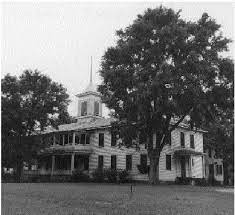 The Choctaws quickly adjusted to their new homeland. Missionaries immediately started opening schools in the early 1830’s in response to the need and urging by the Choctaw leaders. But it was not until 1842 that a Choctaw National School System was created, with boarding and “day” schools. A small “day” school began in 1833 by the missionaries. In the early 1840’s the school became exclusively one for girls and was named Wheelock Female Seminary. In 1842 the Seminary was made a part of the Choctaw National school system by action of the General Council. Wheelock Academy is located near Millerton between Idabel and Valliant. The academy and the historic rock church building nearby are symbols of the Choctaw’s belief in education. Their concern for education actually placed them ahead of many of the American states at the time. In 1834, they produced the first constitution west of the Mississippi River. Their basic law was democratic and their Bill of Rights included guarantees of trial by jury, religious liberty, and freedom of assembly. The Choctaw Tribal Council held its meetings near Tuskahoma where a log council house was erected in 1839. This first capitol of the Choctaw Nation was named Nanih Waiya in memory of a sacred mount back in Mississippi. Later, the General Council made an appropriation for the erection of a substantial brick building, the Tuskahoma Capitol House located about two miles northeast of the site of the old Nanih Waiya Council House. The Choctaw Council House, and the 2,700 acres surrounding it, is the only Indian Council House still under ownership of an Indian Tribe.
The Choctaws quickly adjusted to their new homeland. Missionaries immediately started opening schools in the early 1830’s in response to the need and urging by the Choctaw leaders. But it was not until 1842 that a Choctaw National School System was created, with boarding and “day” schools. A small “day” school began in 1833 by the missionaries. In the early 1840’s the school became exclusively one for girls and was named Wheelock Female Seminary. In 1842 the Seminary was made a part of the Choctaw National school system by action of the General Council. Wheelock Academy is located near Millerton between Idabel and Valliant. The academy and the historic rock church building nearby are symbols of the Choctaw’s belief in education. Their concern for education actually placed them ahead of many of the American states at the time. In 1834, they produced the first constitution west of the Mississippi River. Their basic law was democratic and their Bill of Rights included guarantees of trial by jury, religious liberty, and freedom of assembly. The Choctaw Tribal Council held its meetings near Tuskahoma where a log council house was erected in 1839. This first capitol of the Choctaw Nation was named Nanih Waiya in memory of a sacred mount back in Mississippi. Later, the General Council made an appropriation for the erection of a substantial brick building, the Tuskahoma Capitol House located about two miles northeast of the site of the old Nanih Waiya Council House. The Choctaw Council House, and the 2,700 acres surrounding it, is the only Indian Council House still under ownership of an Indian Tribe.
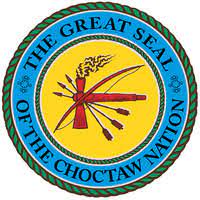
The Choctaw Indians were also greatly influenced by Christian Missionaries. Baptists, Methodists, and Presbyterians were represented among the early missionaries. One of the best-known missionaries was Cyrus Byington who lived in Eagletown but preached in churches all around. He also is given credit for the written Choctaw language, which he helped to create and preserve.
By the turn of the century, more whites than Indians had settled in the Choctaw Nation. The way of life for the Choctaws was drastically changed due to the encroachment of white settlers. The Choctaws belief in land ownership greatly differed from that of the white man. The Choctaws believed that each individual Choctaw could use and develop land to his benefit; however, no one could actually own the land. Because of their attitude toward land ownership, the Choctaws long resisted pressure from the Federal Government to accept allotment of their lands to individual tribal members. Ultimately, the Choctaws, accepting reality, allowed the allotment program to proceed and most tribally owned lands were distributed among tribal members.
 Many early leaders of the Choctaw Nation were residents of McCurtain County. In fact, five of the sixteen Principal Chiefs of the Choctaws between 1860 and 1906 were residents of what is now McCurtain County. One of these Principal Chiefs, Jefferson Gardner, built his home in Eagletown in 1884. The Gardner Mansion still stands and is now maintained as a museum by the Lewis Stiles family. The Choctaws government experience enabled many of them to take a leading role in the formation of the Oklahoma State government in 1907. In fact, a former Choctaw Chief, Allen Wright, is credited with giving Oklahoma its’ name – OKLA meaning people, HOMMA meaning red.
Many early leaders of the Choctaw Nation were residents of McCurtain County. In fact, five of the sixteen Principal Chiefs of the Choctaws between 1860 and 1906 were residents of what is now McCurtain County. One of these Principal Chiefs, Jefferson Gardner, built his home in Eagletown in 1884. The Gardner Mansion still stands and is now maintained as a museum by the Lewis Stiles family. The Choctaws government experience enabled many of them to take a leading role in the formation of the Oklahoma State government in 1907. In fact, a former Choctaw Chief, Allen Wright, is credited with giving Oklahoma its’ name – OKLA meaning people, HOMMA meaning red.
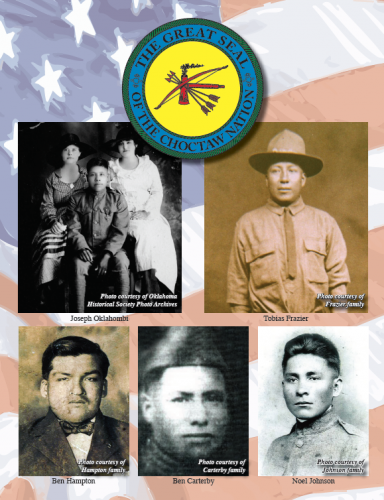 Throughout the years, the Choctaw people continued their influence. During World War I, the Choctaws became known as the original Code-Talkers. They were the first soldiers to use their native language to transmit messages to confuse the enemy. The Choctaw language used in WWI was the only “code” never translated by the German Army. The French government bestowed their highest honor upon the Choctaw Nation for its people’s efforts during the war.
Throughout the years, the Choctaw people continued their influence. During World War I, the Choctaws became known as the original Code-Talkers. They were the first soldiers to use their native language to transmit messages to confuse the enemy. The Choctaw language used in WWI was the only “code” never translated by the German Army. The French government bestowed their highest honor upon the Choctaw Nation for its people’s efforts during the war.
Many of the people of the Choctaw Nation still reside in McCurtain County. The Broken Bow area also benefits from many tribal facilities. Broken Bow is the site of the Choctaw Nation Family Investment Center. The Choctaws also constructed a building that provides leadership for the establishment of the McCurtain County Boys and Girls Club. These facilities are evidence of the continued influence of Choctaw heritage, which has always focused on the importance of providing for the education and well being of its children and their families. The Choctaw’s also have a Travel Plaza on South Park Drive in Broken Bow. Very soon, the Choctaw’s will complete the construction of a new casino located beside the Travel Plaza.
While the Choctaw Nation continues to influence the Broken Bow area economically, it is most important that we remember the Nation’s cultural influence. The people of the Choctaw Nation have worked hard to preserve their culture. Ceremonies are still held where Choctaw people dress in their native ceremonial costumes, and Choctaw Indian recipes are still being passed down among tribal members. Choctaw ceremonial dances are still being learned and performed, and the music is also being preserved. The beautiful Choctaw hymns are themselves a dedication to the Choctaws. The Choctaw people have always been a loving people, devoted to their children and their music reflects this rich heritage. Their dedication to educating young people is also evident today. In fact, the Nation currently plans to renovate Wheelock Academy into a tribal community college.
The culture and heritage of the Broken Bow Area are deeply rooted in the history of the Choctaw Nation. Certainly, the Choctaw Nation will continue to positively influence the future development of the Broken Bow area both economically and culturally.
Sources of Information
Broken Bow: The First Seventy-Five Years, compiled by the Broken Bow History Committee in 1985
McCurtain County: A Pictorial History, prepared by the McCurtain County Historical Society
Choctaw History”, “History and Organization of the Choctaw Tribe” and other publications provided by the Choctaw Nation of Oklahoma
